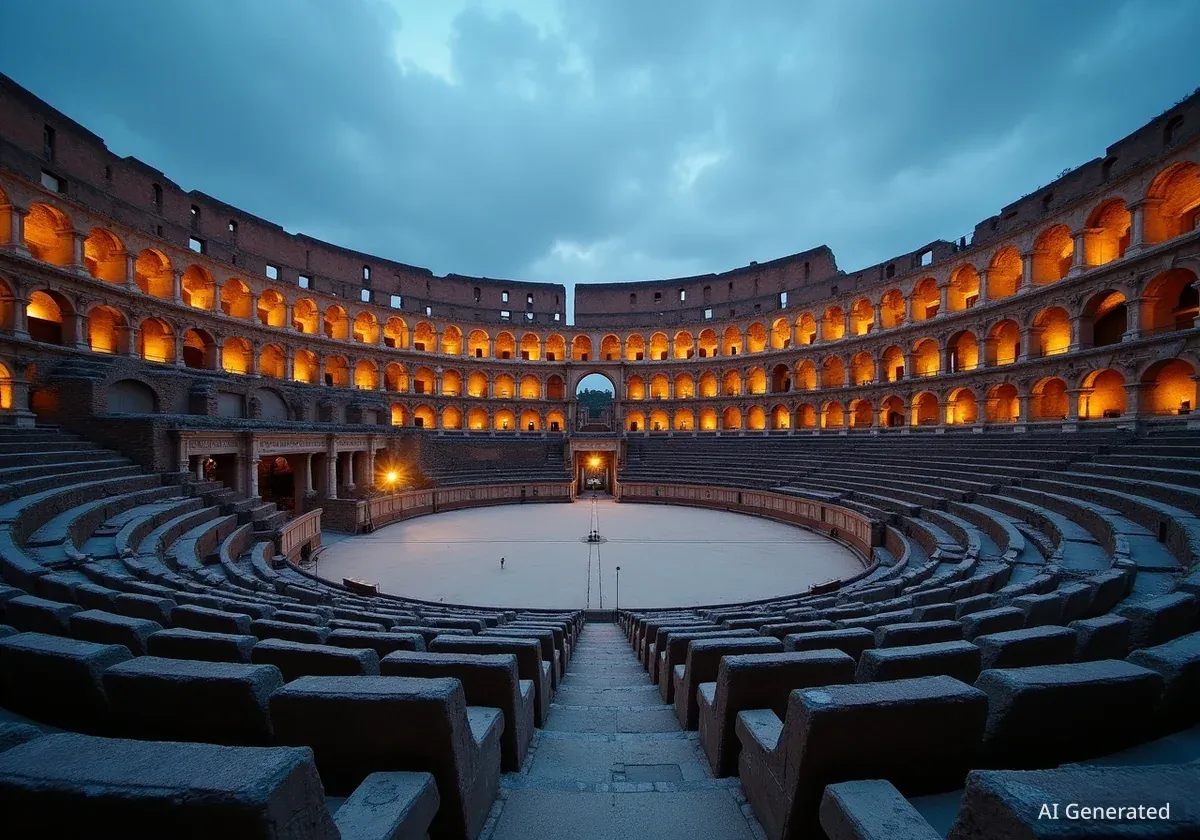San Francisco's Arts Commission has voted to disassemble the Vaillancourt Fountain, a prominent public artwork in Embarcadero Plaza. The decision, made on Monday, November 3, follows concerns raised by city officials regarding public safety and health hazards.
Key Takeaways
- San Francisco Arts Commission voted 8-5 to dismantle Vaillancourt Fountain.
- City officials cited immediate safety and health hazards, including lead and asbestos.
- The estimated cost for dismantling and storage could reach $4.4 million.
- The fountain was recently deemed eligible for preservation under the National Register of Historic Places.
- Public opinion remains divided, with calls for preservation alongside safety concerns.
Fountain Declared a Hazard
The San Francisco Recreation and Park Department (RPD) presented a case for the fountain's removal, describing it as an "immediate and serious hazard." This assessment came just two days after the San Francisco Chronicle reported on the RPD's proposal. The plan involves dismantling the monumental structure and storing it for up to three years.
The estimated cost for this process is around $4.4 million. This figure is significantly higher than earlier estimates, which projected demolition costs closer to $2 million.
Fact Check
The Vaillancourt Fountain has not had water running through it since June 2024. It has been fenced off from the public since June 9 of this year, indicating a prolonged period of disuse and restricted access.
Contradictory Findings and Public Debate
The Arts Commission's decision arrived shortly after the San Francisco Planning Department determined the fountain to be a historic resource. Built in 1971 by artist Armand Vaillancourt, the fountain was designed as a central feature of Embarcadero Plaza and is eligible for preservation under the National Register of Historic Places.
During Monday's meeting, public speakers expressed divided opinions. Many supported preserving the monument in its current location. Conversely, those advocating for its removal frequently cited public safety and health concerns.
Eoanna Goodwin, the RPD project manager for the Embarcadero Plaza redevelopment, emphasized the urgency, stating that dismantling the fountain was a "necessary step to protect the public."
Report Reveals Structural Issues
Earlier this year, the RPD commissioned a report by the architecture firm Page & Turnbull. This report identified traces of lead and asbestos within the structure. It also highlighted aspects that were either not up to code or required strengthening. However, the report itself did not recommend the fountain's disassembly or demolition, instead suggesting remediation efforts.
Historical Context
The Vaillancourt Fountain has been a prominent feature of Embarcadero Plaza since its creation in 1971. Designed by Québécois artist Armand Vaillancourt, it has long been a subject of both admiration and controversy in San Francisco's public art landscape.
Accusations of Artificial Emergency
Critics of the dismantling plan argue that the city is creating an artificial emergency. Bob Pullman, a board member of the Northern California chapter of Docomomo US, a preservation organization, voiced strong objections during the Arts Commission meeting.
"Hundreds of thousands of San Francisco residents live and work in structures at risk of collapse during an earthquake, and are potentially exposed to lead and asbestos on a regular basis," Pullman told the Arts Commission. "No San Francisco agency has declared these conditions as representing a safety emergency [...] the city cannot have it both ways."
Pullman suggested that if these conditions truly represent an emergency, it would imply a widespread public health crisis affecting billions of dollars in buildings and hundreds of thousands of people. He concluded that the city might be manufacturing an emergency to fast-track a park renovation project and avoid its legal responsibilities.
Timing Raises Questions
Andrew Sullivan, a local landscape architect who collaborated with Lawrence Halprin, the original designer of Embarcadero Plaza, echoed these concerns. He described the entire process as "disingenuous from the beginning."
Sullivan noted, "Whenever there’s been discussion of national registry designation, all of a sudden there’s a new emergency and the fountain has to be removed." This timing has fueled suspicions among preservationists.
Commissioners Cast "Painful" Votes
Despite the public debate and the fountain's historic designation, the Arts Commission proceeded with the vote. Vice-president Janine Shiota and Commissioner JD Beltran both described their votes in favor of dismantling as "painful." Several commissioners initially sought to abstain but were ultimately required to take a position.
The Arts Commission's director of communications, Coma Te, stated that the commission "will take no further action until the fountain has been removed and subjected to further study." This indicates a pause in any potential restoration discussions until after the dismantling is complete.
Redevelopment Plans and Artist's Efforts
The decision to dismantle the fountain is linked to a larger redevelopment initiative for Embarcadero Plaza. Property management company BXP is leading a public-private partnership aimed at combining Embarcadero Plaza and the adjacent Sue Bierman Park into a single multi-use space.
The artist, Armand Vaillancourt, has actively tried to prevent the fountain's removal. In September, he sent a cease-and-desist letter to San Francisco municipal officials, attempting to block what he perceived as the sculpture's imminent destruction. The recent motion allows for action to be taken within 90 days.
- The redevelopment plan proposes combining Embarcadero Plaza and Sue Bierman Park.
- Artist Armand Vaillancourt sent a cease-and-desist letter in September.
- The current motion permits action on the fountain within 90 days.
Criticism of City Stewardship
Jack McCarthy, also a board member of Docomomo US’s Northern California chapter, criticized the Arts Commission's approach. He stated that the meeting focused on a narrative curated by the RPD, based on their "non-expert interpretation of an engineering report and a visual assessment."
Charles A. Birnbaum, president and chief executive of The Cultural Landscape Foundation, an education and advocacy organization, further criticized the commission. He suggested a pattern of neglect.
Birnbaum asserted, "For years the commission deliberately decided not to properly maintain the artwork and now they’ve voted to pardon and absolve themselves, and by extension the Recreation and Park Department, for their poor stewardship decisions." He warned that this situation reflects a "broad and dangerous national trend" concerning public art.





